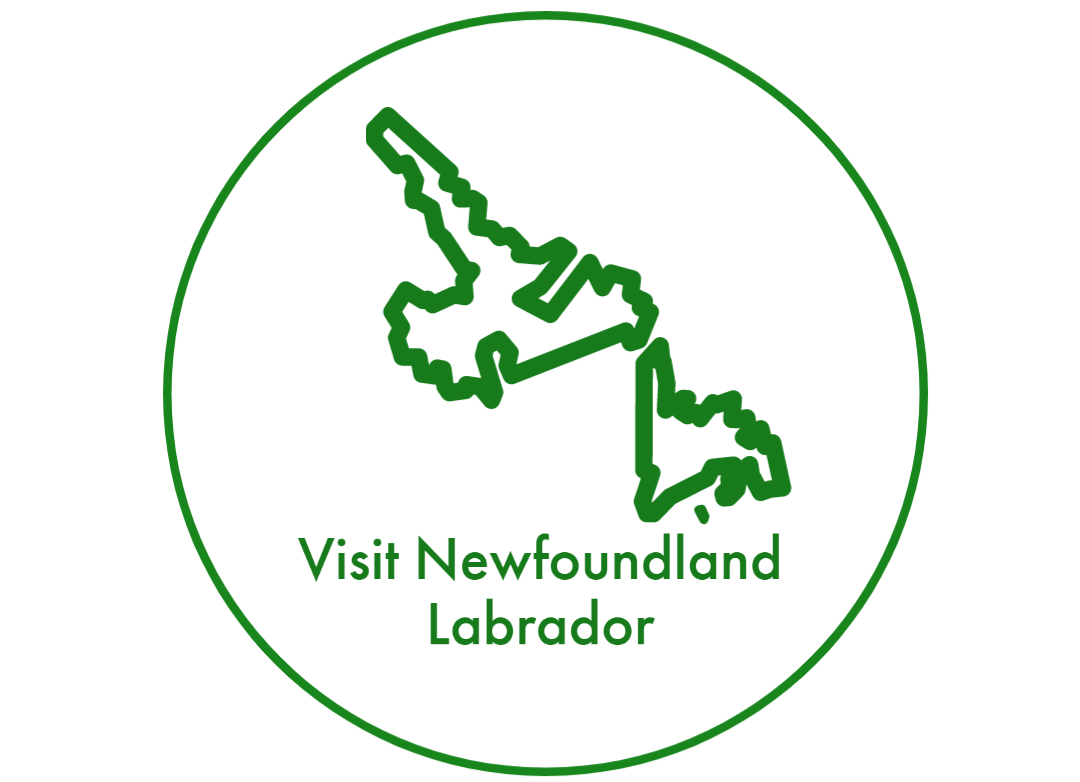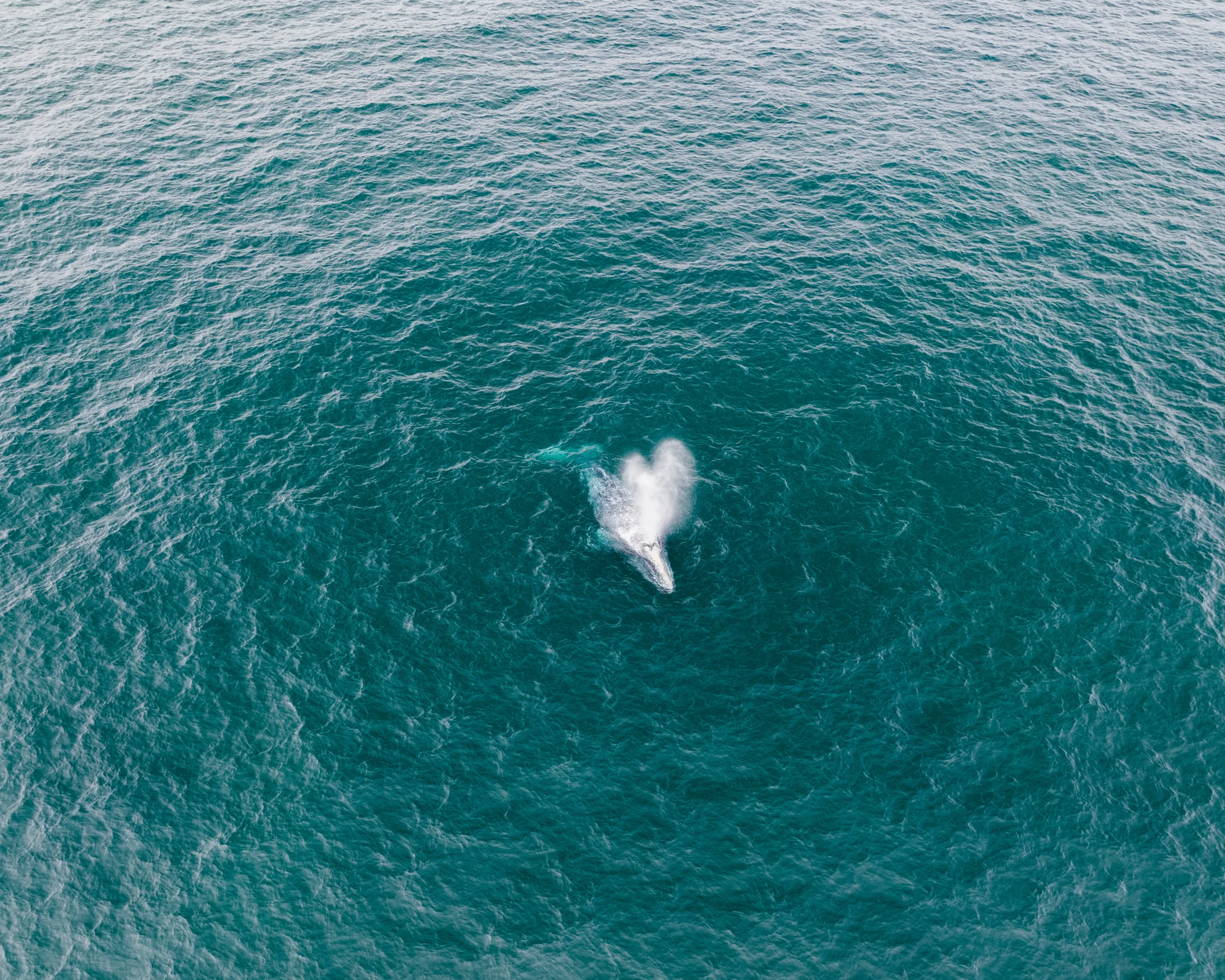Discover The Magnificent World Of Newfoundland Whale Watching
Come discover the magnificent world of Newfoundland Whale Watching. The best time to go whale watching in Newfoundland is during the summer months when whale populations are at their peak. During this time, you have a higher chance of spotting various whale species, such as humpback, minke, and orcas. These majestic creatures migrate to Newfoundland coastal waters to feed and mate, creating fantastic opportunities for whale watching enthusiasts.
The warmer weather and calmer seas also make for a more enjoyable experience. So, if you’re planning a whale watching trip to Newfoundland, schedule it between June and September for the best chances of witnessing these incredible marine mammals.
Newfoundland offers excellent whale watching spots along its rugged coastline. Witless Bay Reserve is one of the top locations to watch whales, just a short drive from St. John’s. This reserve is home to thousands of Atlantic puffins and serves as a feeding ground for various whale species. Another popular spot is Trinity Bay, where you can spot humpback whales breaching and slapping their tails on the water’s surface. Other notable areas include Bonavista, Twillingate, and St. Anthony. These locations provide breathtaking scenery and opportunities to observe whales in their natural habitat, making your whale watching experience in Newfoundland truly unforgettable.
Cost of Whale Watching
The cost of whale watching in Newfoundland varies depending on several factors, such as the tour operator, tour duration, and additional services offered. On average, a whale watching tour in Newfoundland can range from $60 to $150 per person. However, keep in mind that prices may fluctuate, and it’s always a good idea to check with different tour operators for the most up-to-date information.
When considering the cost, it’s important to remember that whale watching tours in Newfoundland typically provide more than just a chance to see whales. Many operators share valuable insights about the whales and their behaviour, enhancing your overall experience.
While the cost of whale watching tours in Newfoundland may vary, choosing a reputable operator who prioritizes the safety and well-being of the whales is essential. Look for companies committed to responsible wildlife viewing practices and environmental conservation. By selecting a tour that aligns with your values, you can ensure a memorable and ethical whale watching experience in the pristine waters of Newfoundland.
More Newfoundland and Labrador Travel Guides
- A Guide to Experiencing the Thrills of Newfoundland Whale Watching Season
- How To Best Experience Newfoundland Whale Watching Season
- How to Discover Icebergs in Newfoundland
- Where Big icebergs off the coast of Newfoundland come from
- How To Experience 500,000 Colorful Puffins in Newfoundland
- How To See both Whales and Puffins in Newfoundland
- How to Best Enjoy Whale Watching in Newfoundland and Labrador
Whale Species
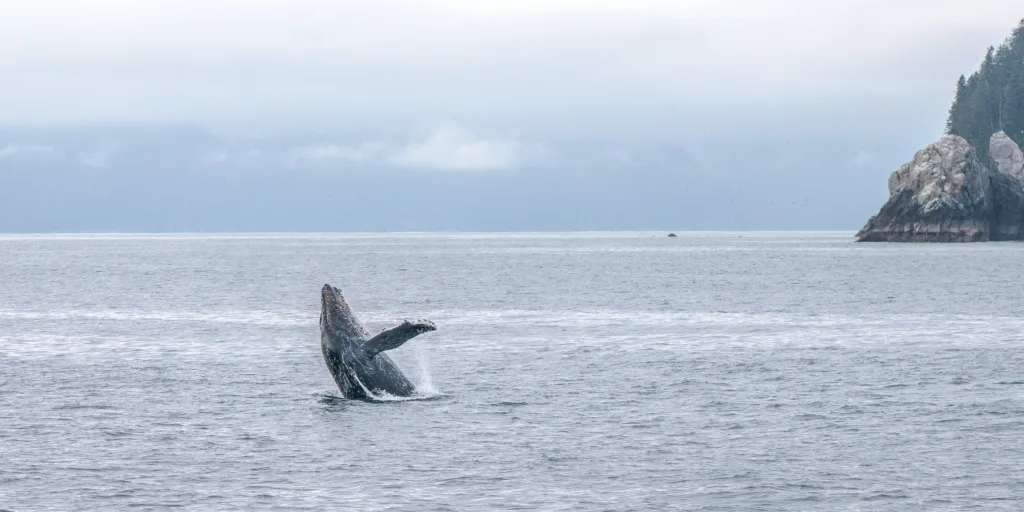
Newfoundland is home to a diverse range of whale species, making it an ideal destination for whale watching enthusiasts. Some of the most common whale species found in the waters of Newfoundland include humpback whales, minke whales, fin whales, and orcas (also known as killer whales). Humpback whales are particularly famous for their acrobatic displays, such as breaching and tail slapping, which make for incredible photo opportunities. On the other hand, Minke whales are smaller and known for their curious nature, often approaching boats to get a closer look. Fin whales, the second-largest whale species, can also be spotted in Newfoundland and are known for their impressive size and streamlined bodies. Lastly, orcas are apex predators occasionally seen in Newfoundland waters.
How close can you get to Whale?
The proximity to whales during a whale watching tour in Newfoundland depends on various factors, including the behaviour of the whales, weather conditions, and the regulations in place to protect the animals. While every effort is made to approach whales respectfully, it’s important to remember that these are wild animals, and their comfort and safety take precedence. Whale watching operators in Newfoundland follow guidelines that dictate a minimum safe distance between boats and whales. However, whales are known to exhibit curiosity and may approach boats on their own accord, allowing for incredible close encounters. It’s important to remember that the welfare of the whales is paramount, and responsible operators prioritize the well-being of these magnificent creatures.
Other Marine Wildlife While Whale Watching
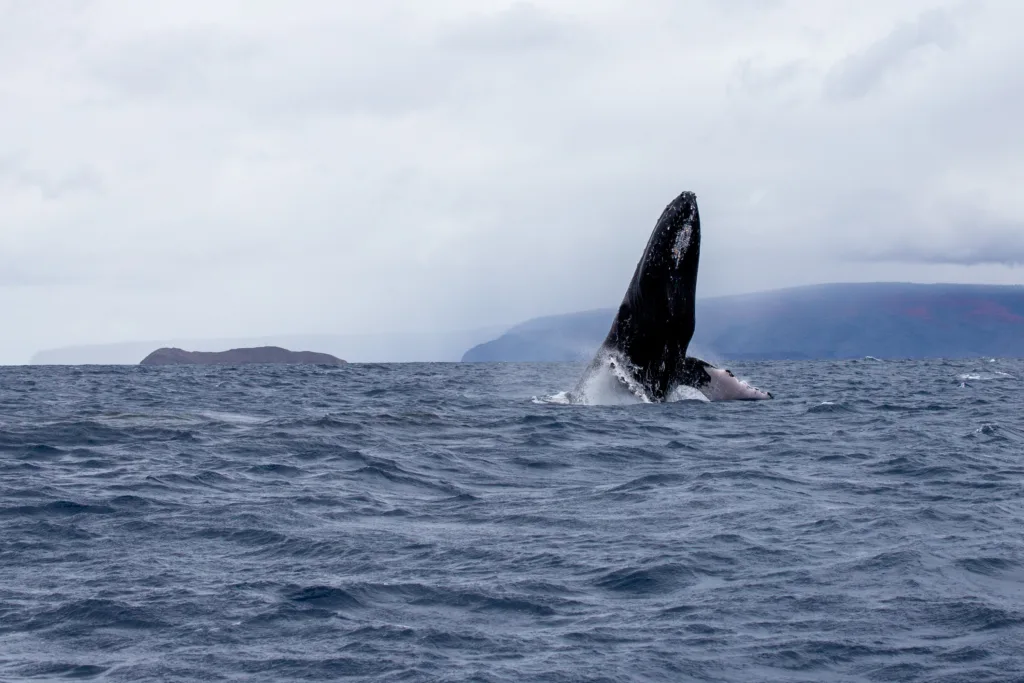
While whale watching in Newfoundland, it’s not uncommon to encounter other fascinating marine wildlife. The waters surrounding Newfoundland are teeming with diverse marine ecosystems, providing a habitat for various species. Alongside whales, you may spot dolphins, porpoises, seals, and a wide array of seabirds, including puffins, gannets, and bald eagles. Dolphins enjoy riding the bow waves created by boats, showcasing their playful nature. Seals can be seen lounging on rocks or bobbing in the water while seabirds soar overhead or dive into the sea searching for food. The presence of these marine animals adds an extra layer of excitement and wonder to your whale watching experience in Newfoundland.
Whale Watching restrictions and regulations
Specific restrictions and regulations are in place to ensure responsible whale watching practices in Newfoundland. These regulations are designed to protect the well-being of the whales and their habitats, as well as to maintain the sustainability of the industry. Operators must adhere to guidelines that govern the minimum distance from the whales, the number of boats allowed near a whale, and the duration spent observing the animals. These guidelines are essential for minimizing disturbance and stress to the whales, allowing them to engage in natural behaviours without interference.
Duration of Whale Watching Tour
The duration of a typical whale watching tour in Newfoundland can vary depending on the operator and the specific tour package you choose. On average, whale watching tours in Newfoundland range from 2 to 4 hours. This timeframe allows ample opportunity to explore the coastal waters and increases your chances of encountering whales and other marine wildlife. More extended tours may be available for those seeking a more immersive experience or for specific wildlife photography excursions. It’s important to check with the tour operator regarding the duration of the tour you are interested in and to plan accordingly. Remember that weather conditions and wildlife behaviour can also impact the duration of the tour, as operators prioritize the safety and the welfare of both passengers and the whales.
Places to Stay
Newfoundland offers a range of accommodations near whale watching sites, ensuring a convenient and comfortable stay during your visit. Depending on the region you plan to explore, you can find various options such as hotels, bed and breakfasts, cabins, and vacation rentals. For example, in St. John’s, the capital city of Newfoundland, there are numerous hotels and guesthouses to choose from. If you prefer a more remote location, coastal towns like Twillingate, Bonavista, or Trinity Bay offer charming accommodations with easy access to whale watching spots. It’s recommended to book your accommodation in advance, especially during the peak whale watching season, to secure the best options that suit your preferences and budget.
Ways to Whale Watch
When it comes to whale watching in Newfoundland, you can enjoy kayak, boat- and land-based experiences, each offering a unique perspective. Boat-based whale watching tours allow you to venture out into the open waters, providing a closer encounter with the whales. These tours typically involve a knowledgeable guide who shares insights and navigates the boat to prime whale watching areas. On the other hand, land-based whale watching allows you to observe whales from designated lookout points along the coast. These vantage points offer panoramic ocean views, and you can spot whales from the shore. Whether you choose a boat-based or land-based experience, both options provide exceptional opportunities to witness these magnificent creatures in their natural habitat.
The Double Whale and Icebergs
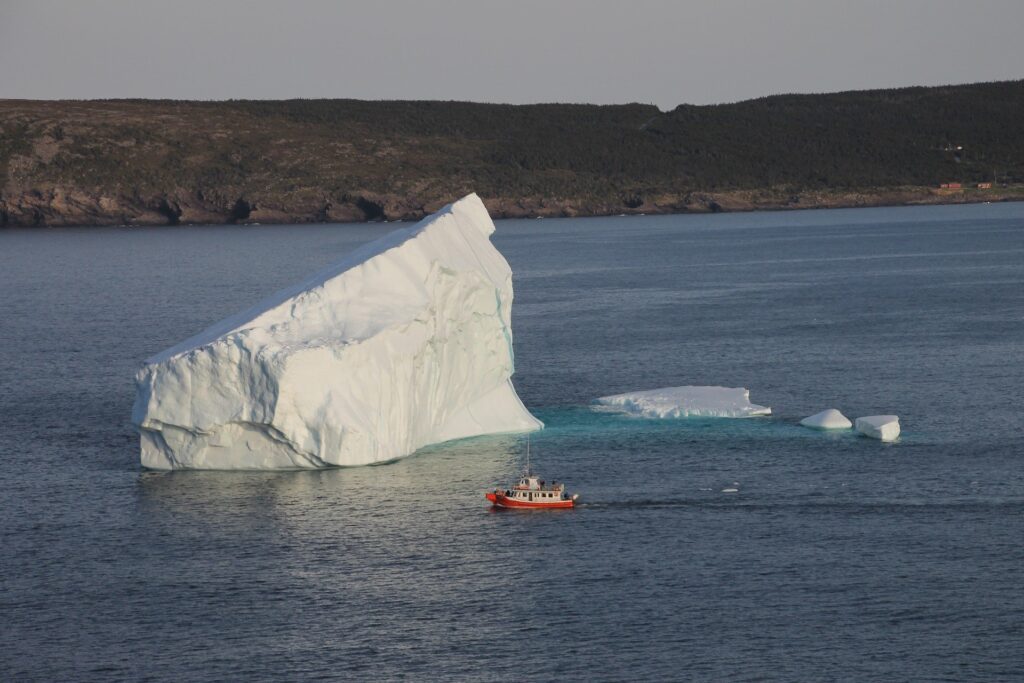
Icebergs in Newfoundland can be seen while whale watching, particularly during the spring and early summer. -Iceberg Alley is a prime destination for iceberg sightings. Icebergs are massive chunks of freshwater ice that break off from glaciers. They often make their way down the Labrador coast, passing by Newfoundland coastline. These breathtaking natural wonders create a stunning backdrop for whale watching excursions, adding an extra element of beauty to your experience. The combination of witnessing both whales and icebergs in Newfoundland pristine waters is truly a remarkable sight to behold.
The Weather While Whale Watching
Weather conditions play a crucial role in whale watching experiences in Newfoundland. Coastal waters can be unpredictable, so it’s important to consider the weather forecast before planning your trip. Ideally, you’ll choose a day with calm seas and clear skies for optimal visibility. Windy or foggy conditions can make spotting whales and appreciating their behaviours more challenging. Additionally, rough seas can impact the comfort and safety of boat-based tours. It’s always advisable to check with the tour operator regarding their policy in case of inclement weather. Remember, while weather conditions can be a factor, whale watching in Newfoundland can still be a rewarding and memorable experience.
Children can Participate in Whale Watching Tours.
Yes, children can participate in whale watching tours in Newfoundland, making it a fantastic family-friendly activity. Watching these majestic whales in their natural habitat can be a captivating and educational experience for children of all ages. Many whale watching operators in Newfoundland provide family-oriented tours that cater to the needs and interests of children. These tours often include informative commentary geared towards young learners, highlighting fascinating facts about whales and other marine wildlife. Check with the tour operator about any age restrictions or specific considerations for children, such as life jacket requirements. Additionally, it’s important to prepare children for the boat ride by ensuring they have dressed appropriately for the weather and taken necessary precautions, such as motion sickness medication if needed. With proper preparation and guidance, whale watching tours in Newfoundland can create lasting memories for the entire family and foster a deep appreciation for the natural world.
Whale Watching Dress Code
What should I wear when going whale watching? When going on a whale watching tour in Newfoundland, it’s essential to dress appropriately for the weather conditions and the possibility of ocean spray. Layering your clothing is recommended, allowing you to adjust your attire based on temperature changes throughout the tour. Start with a base layer fabric to keep you dry and comfortable. Over that, wear a warm, insulating layer such as a sweater. For the outermost layer, choose a waterproof and windproof jacket or a shell to protect you from ocean spray and potential rain. Remember to wear comfortable pants or leggings and sturdy footwear with good traction to ensure stability on the boat. Bringing a good hat and sunscreen to protect yourself from the sun is also a good idea. You can fully enjoy your whale watching experience in Newfoundland by dressing appropriately.
Whale Watching Educational Program
Yes, educational programs and researchers are actively involved in whale watching in Newfoundland. These programs aim to enhance the understanding of whale behaviour, migration patterns, and their ecological significance. Some whale watching tour operators collaborate with local marine research organizations or universities to collect data and contribute to ongoing research efforts. Some operators may have onboard guides who provide educational commentary about the whales and their conservation. By supporting these initiatives, your whale watching experience in Newfoundland becomes educational and contributes to the conservation and protection of these magnificent creatures.
Spotting Whales
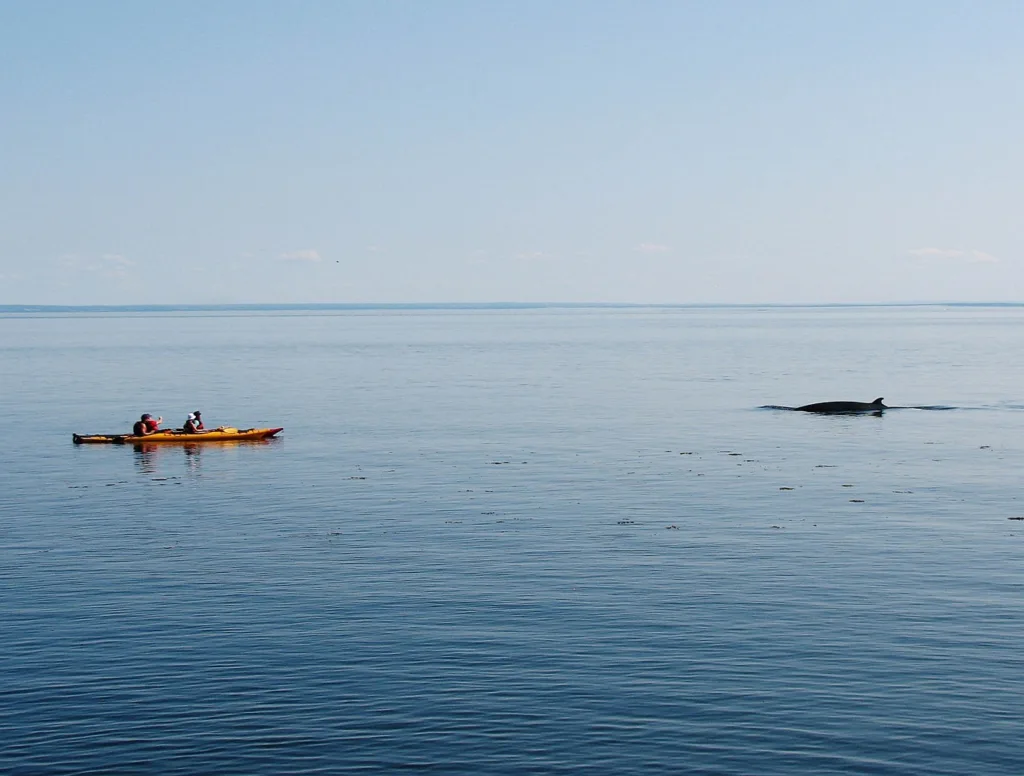
The success rate of spotting whales during a tour in Newfoundland can vary depending on several factors, including the time of year, weather conditions, and the tour operator’s expertise. However, Newfoundland coastal waters are known for their abundant whales, and the chances of seeing these majestic creatures are generally high. During the peak whale watching season, from June to September, the probability of spotting whales increases significantly. However, it’s important to note that wildlife sightings are not guaranteed as whales are wild animals, and their behaviours can be unpredictable. Nevertheless, reputable tour operators in Newfoundland have experienced guides and crews skilled at locating and tracking whales, maximizing your chances of a successful and rewarding whale watching experience.
While it is possible to go whale watching in Newfoundland without a tour guide, it is generally recommended to book a guided tour for the best experience. Whale watching tours offer numerous advantages, including the expertise of knowledgeable guides who can navigate to prime whale watching areas and provide valuable insights about the whales and their behaviours. They are familiar with the local marine ecosystem and know where and when to look for whales, significantly increasing your chances of sightings. Additionally, tour operators have specialized boats designed for optimal whale watching, providing better visibility and comfort. Joining a guided tour also ensures that you adhere to responsible whale watching practices and support conservation efforts. However, if you choose to go whale watching independently, it’s important to research and follow guidelines to minimize disturbance to the whales and ensure your safety.
The best time to Whale Watching is June to September.
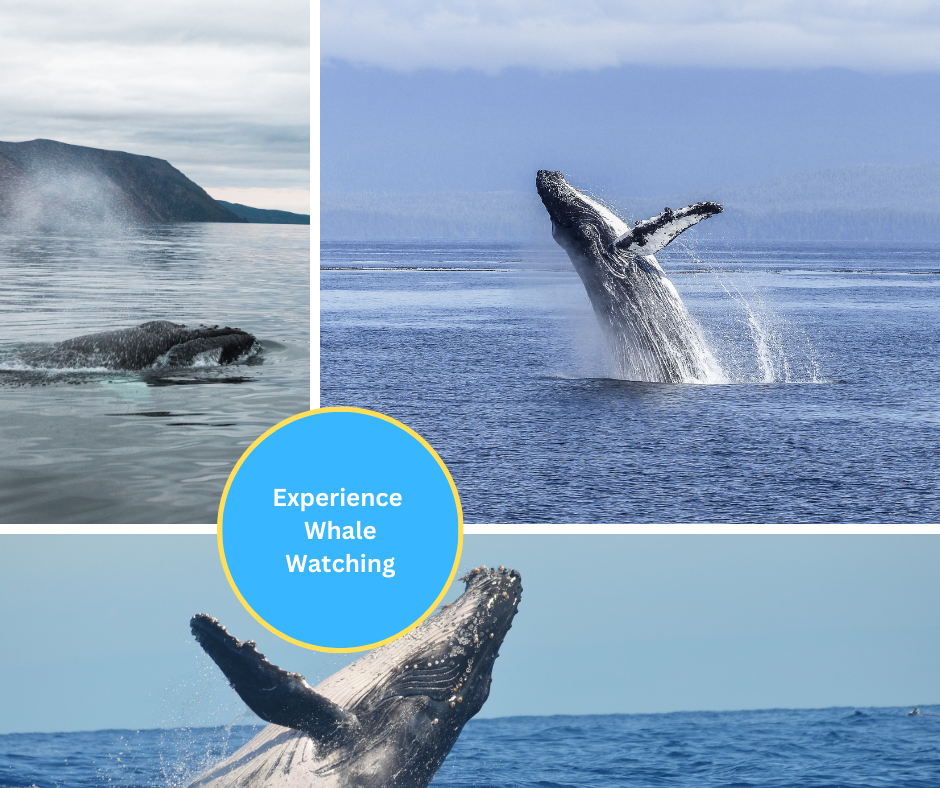
The best time to go whale watching in Newfoundland is during the peak season, which typically runs from June to September. During this period, whales are abundant in Newfoundland coastal waters as they migrate to feed on the rich marine resources. Humpback whales are particularly prevalent during this time, known for their impressive acrobatics and spectacular displays. The warmer weather and calmer summer seas also make it an ideal time for whale watching excursions. However, it’s important to note that whale sightings can vary, and factors such as weather conditions and the availability of food sources can influence their presence. It’s advisable to check with local tour operators for the most up-to-date information and to book your whale watching tour in advance to secure your spot during the peak season.
Whale Watching in Bonavista
The Bonavista Peninsula is renowned for its excellent whale watching opportunities. The waters off the Bonavista Peninsula are rich in marine life, attracting various whale species. Humpback whales are commonly sighted in this area, showcasing their breaching and tail-slapping behaviours. Minke and fin whales are also frequently spotted, adding to the diversity of sightings. The charming town of Trinity, located on the Bonavista Peninsula, is a popular starting point for whale watching tours. Its proximity to prime whale habitats and the presence of knowledgeable guides make it an ideal destination for an unforgettable whale watching experience. Exploring the Bonavista Peninsula offers the chance to witness whales and immerse yourself in Newfoundland breathtaking coastal landscapes.
Whale Watching at Witless Bay Ecological Reserve
The Witless Bay Ecological Reserve near St. John’s, Newfoundland, is exceptional for whale watching. The reserve is home to North America largest Atlantic puffin colony and serves as a feeding ground for various whale species. Humpback whales are frequently seen in these waters, showcasing their acrobatic displays. The presence of minke whales, fin whales, and even orcas further adds to the excitement of whale watching in this area. The Witless Bay Ecological Reserve offers guided boat tours that provide an up-close and personal experience with these magnificent creatures. The combination of witnessing whales, puffins, and other seabirds in their natural habitat makes the Witless Bay Ecological Reserve a must-visit destination for nature enthusiasts and whale lovers.
Whale Watching in Twillingate
The small coastal town of Twillingate in Newfoundland is another popular spot for whale watching. Situated along the island’s northeastern coast, Twillingate offers views of the Atlantic Ocean and is known as the “Iceberg Capital of the World.” While whale sightings are common in this area, it is also an excellent place to witness majestic icebergs floating by. The convergence of whales and icebergs creates a unique and inspiring experience for visitors. Humpback, minke, and fin whales are frequently spotted, along with seals and seabirds. Joining a whale watching tour in Twillingate allows you to witness the incredible beauty of whales and icebergs, making it a remarkable and memorable destination for nature enthusiasts.
Photographing of Whales during your Tour
When capturing stunning photographs of whales during your whale watching tour in Newfoundland, there are a few tips to keep in mind:
- Make sure you have a camera with a telephoto lens to zoom in and capture the details of the whales. A lens with a focal length of at least 200mm or longer is recommended for capturing close-up shots.
- Consider using a fast shutter speed to freeze the motion of the whales, especially during their energetic behaviours like breaching or tail slapping. It’s also important to anticipate the whale’s movements and be ready to capture the moment, as they can surface unpredictably. Pay attention to the composition of your photos, framing the whales against the scenic backdrop of the coastline or capturing the interaction between the whales and other wildlife.
- Be patient and observant. Whale watching is a dynamic experience, and you never know when an incredible photo opportunity will present itself.
Remember to enjoy the moment and respect the whales’ natural environment while capturing stunning photographs to treasure for a lifetime.
One of Newfoundland best places to see humpback whales is in the coastal waters around St. Vincent’s Beach in St. Vincent’s, Newfoundland. St. Vincent’s is located on the Irish Loop coast and is renowned for its extraordinary whale and bird population that visit each season. The water around St. Vincent’s, Newfoundland, is a rich feeding ground for these magnificent creatures. Humpback whales are attracted to the abundant food sources in the bay, making it a hotspot for sightings.
Unique Iceberg and Whale Sighting
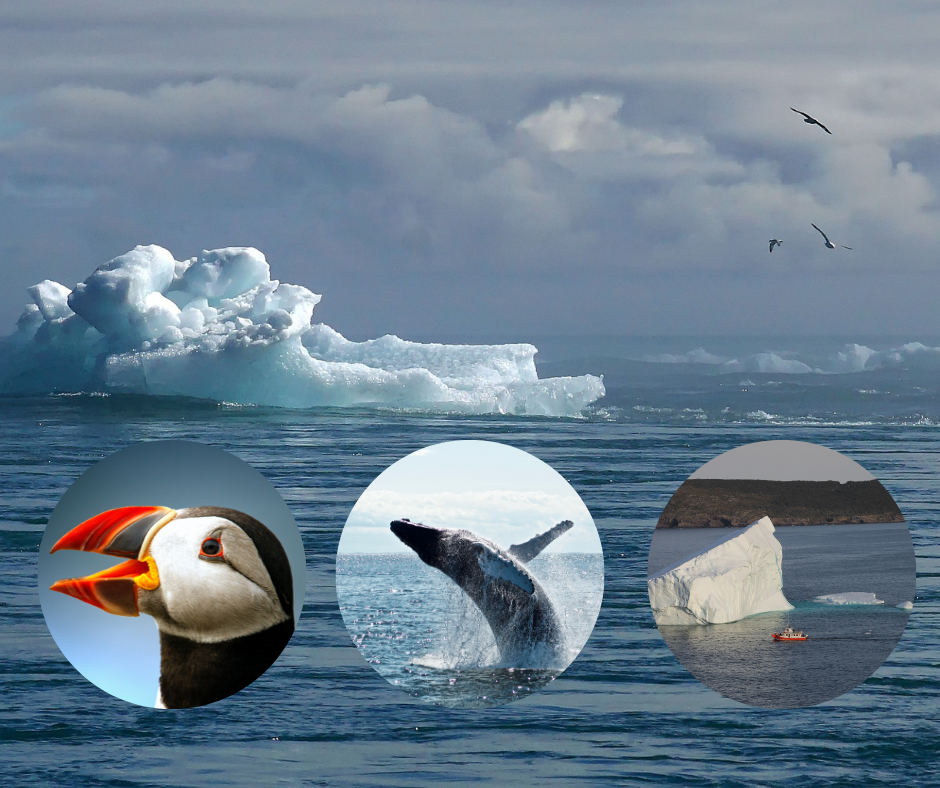
The top places to see icebergs and Whales are Fogo Island, Change Islands, Battle Harbour, Red Bay, and Point Amour. Combining iceberg watching with whale watching in Newfoundland is possible, providing a genuinely spectacular nature experience. Icebergs are common along Newfoundland coastline, especially during the spring and early summer. The presence of icebergs adds a sense of wonder and beauty to your whale watching excursion. While the primary focus may be on spotting whales, the chance to see these massive ice formations drifting through the ocean creates a unique and breathtaking backdrop. Witnessing the synergy between the gentle giants of the sea and the floating ice sculptures is an unforgettable experience showcasing Newfoundland natural wonders. Be sure to check with tour operators for specific iceberg sightings and safety considerations during your chosen time of visit.
Newfoundland diverse coastal regions offer a range of whale watching opportunities, allowing you to choose a location that suits your preferences and travel plans. The Avalon coast of Newfoundland, including areas such as St. John’s, and Witless Bay, is known for its rich marine biodiversity and proximity to prime whale habitats. This region provides excellent whale watching experiences, with humpback whales being the most commonly spotted species. Newfoundland Eastern and Central regions, particularly the Bonavista Peninsula and Twillingate, also offers exceptional whale watching opportunities. These regions are famous for their scenic coastal landscapes and are frequented by humpback, minke, and fin whales. Whether you choose the Eastern or Avalon coasts, you’re sure to have a memorable whale watching experience in Newfoundland.
Getting Around Newfoundland and Labrador.
The primary international airport in Newfoundland is St. John’s International Airport. You can rent a car and drive to your chosen whale watching destination. Newfoundland has a well-developed road network, making it convenient to explore different coastal areas. There are also regional airports in other cities and towns throughout Newfoundland, such as Gander, Deer Lake, and Stephenville.
Duration of your stay in Newfoundland
It’s essential to consider the duration of your stay in Newfoundland when planning a whale watching trip. While a few days can provide a rewarding experience, allowing you to see whales and explore the coastal areas, a more extended stay allows for a more comprehensive exploration of the regions. It increases your chances of encountering whales on multiple occasions.
If you have limited time, you can opt for a day trip from a base location, such as St. John’s or Twillingate, to participate in a whale watching tour. However, if you can extend your stay, consider allocating a few days or more to fully immerse yourself in the whale watching experience and explore other attractions in Newfoundland.
By spending multiple days in a specific whale watching destination, you increase your opportunities for encounters with different species of whales and observe various behaviours. Additionally, dedicating extra time allows you to explore other coastal activities, such as hiking scenic trails, visiting historic sites, or experiencing local culture and cuisine.
Ultimately, the duration of your stay in Newfoundland will depend on your preferences, available time, and desired level of immersion in the region’s natural beauty.
Thanks for Reading.
Travelling to Newfoundland and Labrador. Travelers also ask.
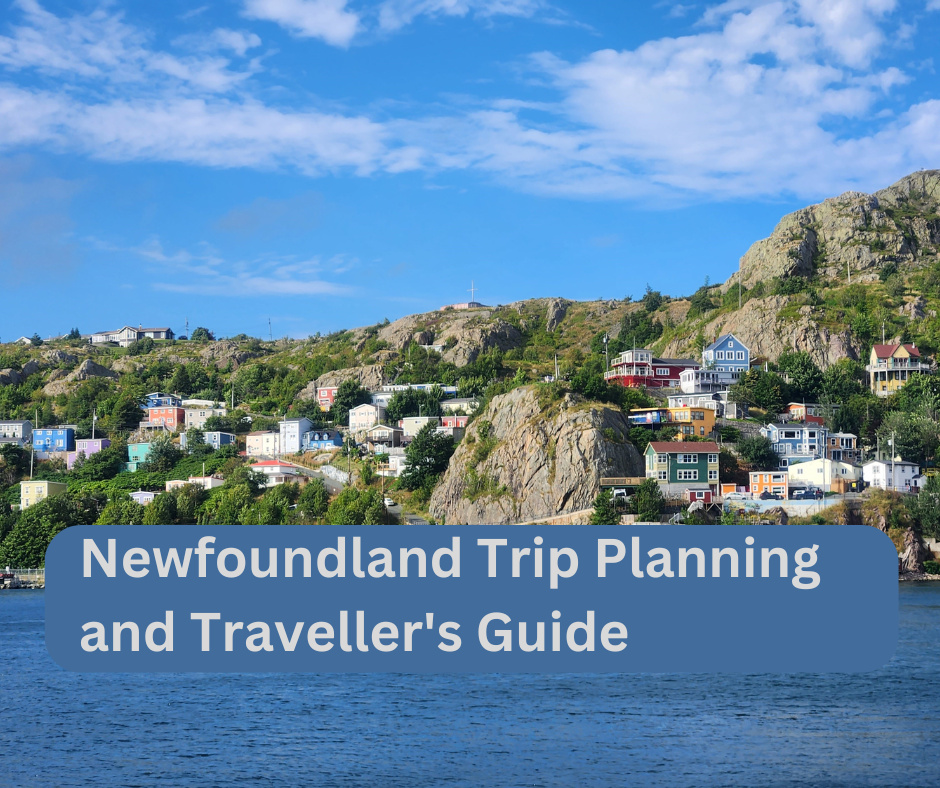
Can you see icebergs in Newfoundland now?
Icebergs are typically seen off the coast of Newfoundland from late spring to early summer. The best months for iceberg viewing are usually May and June. If it’s within this timeframe, you can likely see icebergs, especially in areas like Twillingate and St. Anthony.
When to see icebergs in Twillingate?
The prime time to see icebergs in Twillingate is from late May to early June. This period offers the highest likelihood of witnessing these massive ice formations as they drift southward along the coast.
Where is the best place to see icebergs?
The best places to see icebergs in Newfoundland include Twillingate, St. Anthony, Bonavista, and Fogo Island. Twillingate is often called the “Iceberg Capital of the World” due to its high iceberg count and accessibility.
What is the best month to see icebergs in Newfoundland?
The best month to see icebergs in Newfoundland is May. During this month, the icebergs are plentiful, and the weather is often more favourable for boat tours and coastal viewing.
How long do icebergs last in Newfoundland?
Icebergs can last from a few weeks to several months in Newfoundland waters. Their longevity depends on their size, the water temperature, and the weather conditions. Typically, icebergs seen off Newfoundland begin their journey from Greenland and take about 1-2 years to reach the island.
Where is Newfoundland Iceberg Alley?
Iceberg Alley refers to the stretch of ocean off the coast of Newfoundland and Labrador, where icebergs are commonly seen. It extends from the coast of Labrador down through Newfoundland’s eastern shore, including areas like Twillingate, St. Anthony, and Bonavista.
Are there icebergs in Newfoundland in August?
By August, the number of icebergs in Newfoundland significantly decreases. While it’s possible to see the occasional iceberg, they are much rarer than the peak months of May and June.
What month is the warmest in Newfoundland?
July is typically the warmest month in Newfoundland, with a temperatures ranging from 15°C to 20°C. This makes it a popular time for visitors seeking to explore the island’s natural beauty.
Where to see whales in Newfoundland?
Whale watching is popular in Newfoundland from June to September. The best locations include St. John’s, Trinity, Bonavista, and Witless Bay Ecological Reserve, renowned for its abundant marine life, including humpback whales.
Can you see the Northern Lights from Newfoundland?
You can see the Northern Lights from Newfoundland, particularly in the more northern and remote parts of the island. The best times are during the fall and winter when the nights are the longest and the skies are the darkest.
How close to Newfoundland did the Titanic sink?
The Titanic sank about 370 miles south-southeast off the coast of Newfoundland. The nearest land to the wreck site is the southeastern tip of Newfoundland.
How close is the Titanic to Newfoundland?
The Titanic’s wreck is located approximately 370 miles off the coast of Newfoundland. This proximity made Newfoundland a critical point in the communication and rescue efforts following the disaster.
Where did the Titanic sink off Newfoundland?
The Titanic sank in the Atlantic Ocean, approximately 370 miles south-southeast of Newfoundland coast.
Are there polar bears in Newfoundland?
Polar bears are not native to Newfoundland itself, but they occasionally appear on the northern coast of Labrador, particularly when sea ice drifts south from the Arctic.
What is the iceberg capital of Canada?
Twillingate, a small coastal town in Newfoundland, is known as the “Iceberg Capital of the World” due to its frequent and spectacular iceberg sightings during the peak season.
How fast do icebergs move?
Icebergs generally drift at about 0.7 kilometres per hour (0.4 miles per hour). However, their speed can vary depending on ocean currents, winds, and the iceberg’s size.
Why are icebergs sometimes black?
Icebergs appear black when they contain a high amount of sediment and debris. This can occur when icebergs calve off glaciers that scrape the land, picking up rocks and soil, which then get frozen into the ice.
Does the Atlantic Ocean in Newfoundland freeze?
The Atlantic Ocean around Newfoundland does not freeze over due to its relatively warmer temperatures than Arctic waters. However, sea ice and icebergs from the Arctic can drift into Newfoundland waters, especially during the spring.
Are there puffins in Twillingate?
While puffins are not commonly found in Twillingate, they are prevalent in other parts of Newfoundland, such as the Witless Bay Ecological Reserve. Twillingate is more famous for its iceberg and whale sightings.
What is the best time to see whales in NL Newfoundland?
The best time to see whales in Newfoundland is from June to September. Humpback whales, minke whales, and other species migrate through Newfoundland coastal waters during this period.
Is the tip of the iceberg visible?
Yes, the tip of the iceberg is visible above the water, but it represents only about 10% of its total mass. The remaining 90% is submerged underwater, making icebergs particularly dangerous for ships.
Can you see icebergs in Newfoundland in July?
Yes, you can still see icebergs in July in Newfoundland, although they are less common than in May and June. By July, many icebergs have drifted further south or melted.
Where is the best place to see icebergs?
Twillingate, St. Anthony, Bonavista, and Fogo Island are the best places to see icebergs in Newfoundland. These locations offer optimal viewing points and tour opportunities.
How often can you see northern lights in Newfoundland?
The Northern Lights can be seen in Newfoundland several times a year, especially in the fall and winter months. The frequency depends on solar activity and the clarity of the night skies.
Why is it called Iceberg Alley?
The stretch of water known as Iceberg Alley gets its name from the numerous icebergs that travel through this area each year. The icebergs originate from Greenland and drift down the Labrador Current past Newfoundland and Labrador.
When should I visit Iceberg Alley?
The best time to visit Iceberg Alley is from late May to early June. During this period, the highest concentration of icebergs can be seen, offering the most spectacular views.
Can you swim in Newfoundland in August?
Yes, you can swim in Newfoundland in August, especially in the warmer, sheltered areas like lakes and coves. However, the ocean waters remain pretty cold, typically around 12-15°C, so swimming in the sea can be chilly.
How hot is Newfoundland in July?
Newfoundland experiences its warmest weather in July, with a temperatures ranging from 15°C to 20°C. Some days can be warmer, especially inland and away from the coastal breezes.
What are the top tourist attractions in Bay Bulls and Witless Bay?
Bay Bulls is known for its incredible whale-watching tours, particularly with O’Brien’s Whale and Bird Tours. Witless Bay Ecological Reserve is famous for its puffin colonies and seabird watching. Both areas also offer beautiful coastal hiking trails, such as the East Coast Trail.
Where can I go whale watching in Bay Bulls?
O’Brien’s Whale and Bird Tours is the most popular whale-watching operator in Bay Bulls. Their tours often spot humpback whales, orcas, and other marine life, providing an unforgettable experience.
What wildlife can I see in Witless Bay Ecological Reserve?
The Ecological Reserve in Witless Bay is home to the largest Atlantic puffin colony, common murres, black-legged kittiwakes, and other seabirds on the island. During certain seasons, visitors can also see humpback whales and dolphins.
How do I get to Bay Bulls and Witless Bay from St. John’s?
Bay Bulls and Witless Bay are approximately a 30-minute south of St. John’s. Take the Southern Shore Highway, directly to these coastal towns.
What are the best hiking trails in Bay Bulls?
The Spout Path and Mickeleens Path are part of the East Coast Trail network and are highly recommended for their scenic coastal views, challenging terrain, and natural beauty.
When is the best time to visit Witless Bay to watch puffins?
The best time to see puffins in Witless Bay is mid-May to mid-September. During this period, thousands of puffins nest and raise their young on the Witless Bay Ecological Reserve islands.
Are there any good restaurants in Bay Bulls and Witless Bay?
In Mobile, The Captain’s Table is well-known for its seafood dishes and delicious local cuisine in a cozy atmosphere.
What accommodation options are available in Bay Bulls and Witless Bay?
The area has several charming B&Bs and inns, such as Bread and Cheese Country Inn in Bay Bulls and Whale House Guest House in Witless Bay, offering comfortable stays and local hospitality.
What are some family-friendly activities in Bay Bulls?
Whale watching, visiting the Witless Bay Ecological Reserve, and exploring the scenic trails are great family-friendly activities. Additionally, families can enjoy picnicking, puffin watching and beachcombing along the coast.
Can you swim in the waters around Bay Bulls and Witless Bay?
The waters around Bay Bulls and Witless Bay are generally cold, even in summer, and the rugged coastline can be dangerous for swimming. However, beachcombing and exploring tide pools can be enjoyable activities.
What marine life can be seen on a boat tour from Bay Bulls?
Boat tours from Bay Bulls often encounter humpback whales, orcas, minke whales, and numerous seabirds such as puffins, razorbills, and murres. Occasionally, dolphins and sea turtles are also spotted.
Are there any guided tours in Witless Bay?
Several companies offer guided tours in Witless Bay, focusing on bird watching, whale watching, and exploring the ecological reserve. O’Brien’s Whale and Bird Tours is a notable provider.
What are the best photography spots in Bay Bulls and Witless Bay?
The rugged coastline, picturesque harbour, and wildlife offer excellent photography opportunities. Specific spots include:
- The viewpoints along the East Coast Trail.
- The harbour in Bay Bulls.
- The bird colonies in Witless Bay Ecological Reserve.
What are some nearby attractions to Bay Bulls and Witless Bay?
Nearby attractions include Cape Spear, North America’s easternmost point, and La Manche Provincial Park, known for its suspension bridge and hiking trails. St. John’s has a rich history and vibrant culture.
Is there a visitor center in Bay Bulls or Witless Bay?
While there isn’t a dedicated visitor center, local tour operators and accommodations often provide information and resources for visitors.
What are the best times of year to visit Bay Bulls and Witless Bay for outdoor activities? The summer months (June to September) are ideal for outdoor activities, offering the best weather for hiking, whale watching, and bird watching. Fall also provides beautiful foliage and fewer crowds.
Can you see the Northern Lights in Bay Bulls and Witless Bay?
While it’s not common, on precise nights, particularly in the winter months, it is possible to see the Northern Lights in Bay Bulls and Witless Bay due to their northern latitude and low light pollution.
What types of whales can you see in Bay Bulls and Witless Bay?
In Bay Bulls and Witless Bay, you can commonly see humpback whales, minke whales, and occasionally orcas. The region’s rich marine ecosystem attracts these magnificent creatures, particularly during the summer when they migrate to feed.
When is the best time to watch whales in Bay Bulls and Witless Bay?
The best time for whale watching in Bay Bulls and Witless Bay is from mid-June to mid-August. During these months, the waters teem with whales due to the abundance of capelin, their primary food source.
What is the weather like for whale watching in Bay Bulls and Witless Bay?
The weather during the whale watching season in Bay Bulls and Witless Bay is mild, with temperatures ranging 13°C to 22°C. However, it can be windy and more relaxed on the water, so dressing in layers is advisable.
How long do whale-watching tours last in Bay Bulls and Witless Bay?
Whale-watching tours in Bay Bulls and Witless Bay typically last 2 to 2.5 hours. This duration allows ample time to locate and observe the whales and enjoy the stunning coastal scenery.
Can you see puffins while whale watching in Bay Bulls and Witless Bay?
Absolutely! Puffins are a common sight in Bay Bulls and Witless Bay, especially around the Witless Bay Ecological Reserve, which hosts one of the largest puffin colonies in North America. Many whale-watching tours also include puffin viewing.
What should you wear for whale watching in Bay Bulls and Witless Bay?
For whale watching in Bay Bulls and Witless Bay, wearing layered clothing to adjust to changing temperatures, a waterproof jacket, non-slip shoes, and a hat is best.
Are whale-watching tours in Bay Bulls and Witless Bay family-friendly?
Yes, whale-watching tours in Bay Bulls and Witless Bay are family-friendly. The tours suit children, and the experience can be educational and thrilling for all ages. However, checking with the tour operator for specific age restrictions or recommendations is essential.
How close can you get to whales on a Bay Bulls and Witless Bay tour?
Tour boats maintain a respectful distance from the whales to ensure their safety and comfort. Typically, boats stay at least 200 meters away, but whales often approach boats out of curiosity, offering closer views without disturbance.
What other wildlife can you see while whale watching in Bay Bulls and Witless Bay?
Besides whales and puffins, you might see other seabirds, such as razorbills, murres, and gannets. Seals and dolphins are also frequent visitors to these waters, enhancing the overall wildlife viewing experience.
Do you need to book whale-watching tours in advance in Bay Bulls and Witless Bay?
We recommend booking whale-watching tours in advance, especially during peak season (mid-June to mid-August). This ensures you secure a spot on your preferred tour and time.
What are Bay Bulls and Witless Bay’s best whale-watching tour operators?
Some of the best whale-watching tour operators in Bay Bulls and Witless Bay include O’Brien’s Whale and Bird Tours, Gatherall’s Puffin and Whale Watch, and Mullowney’s Puffin and Whale Tours. These operators are well-reviewed for their knowledgeable guides and excellent service.
How much do whale watching tours cost in Bay Bulls and Witless Bay?
Whale-watching tour prices in Bay Bulls and Witless Bay range from CAD 60 to CAD 120 per adult. Discounts are often available for children, seniors, and group bookings.
Are whale-watching tours in Bay Bulls and Witless Bay accessible for people with disabilities?
Many whale-watching tour operators strive to be inclusive, offering boats with ramps or lifts for wheelchair access. However, contacting the tour operator in advance is advisable to ensure they can accommodate specific accessibility needs.
What safety measures exist for whale-watching tours in Bay Bulls and Witless Bay?
Safety measures include life jackets for all passengers, safety briefings before departure, experienced captains and crew, and adherence to weather advisories. Boats are also equipped with communication devices and emergency equipment.
Can you see whales from the shore in Bay Bulls and Witless Bay?
While spotting whales from the shore in Bay Bulls and Witless Bay is possible, the best views are typically obtained from a boat. However, certain coastal areas and lookout points may offer occasional sightings.
What should you bring on a whale-watching tour in Bay Bulls and Witless Bay?
Bring a camera or binoculars for better viewing, layered clothing, a waterproof jacket, sunscreen, a hat, and any personal items like motion sickness medication.
What is the Witless Bay Ecological Reserve, and why is it essential for whale watching?
The Witless Bay Ecological Reserve is a protected area known for its abundant marine wildlife, including large seabird colonies and frequent whale sightings. Its nutrient-rich waters attract whales, making it a prime location for whale watching.
Are there educational components to whale-watching tours in Bay Bulls and Witless Bay?
Many tours include educational commentary from knowledgeable guides who provide information about whale behaviour, marine ecosystems, and conservation efforts. This enhances the overall experience by adding an educational dimension.
What is the success rate of seeing whales on tours in Bay Bulls and Witless Bay?
The success rate of seeing whales in Bay Bulls and Witless Bay is very high, often exceeding 90% during peak season. The region’s rich feeding grounds and migration patterns ensure frequent sightings.
Is St. John’s, Newfoundland, worth visiting?
St. John’s, the capital, is worth visiting. St. John’s offers a rich cultural heritage, a vibrant arts scene, and breathtaking natural landscapes. Known for its colourful row houses, historic sites like Signal Hill, and picturesque harbour, St. John’s provides a unique blend of natural beauty. The city’s friendly locals, lively music scene, and excellent seafood add to its charm, making it a must-visit destination.
What is St. John’s, Newfoundland, famous for?
St. John’s is famous for several things:
- Signal Hill: This historic site offers panoramic views, and the Cabot Tower is where the first transatlantic wireless communication was received.
- George Street is renowned for its nightlife, with the most bars and pubs per capita in North America.
- Colourful Row Houses: Known as Jellybean Row, these brightly painted homes are iconic.
- Rich History: As one of the oldest cities in North America, it has a rich maritime history and cultural heritage.
How many days does it take to visit St. John’s, Newfoundland?
To fully experience St. John’s and its surroundings, a visit of 4 to 5 days is recommended. This allows time to explore the city’s historical sites, enjoy the local cuisine, enjoy the nightlife on George Street, and venture out to nearby natural attractions such as Cape Spear and Quidi Vidi Village.
Is St. John’s, Newfoundland, a walkable city?
Yes, St. John’s is a walkable city, especially in the downtown area, where many attractions, restaurants, and shops are concentrated. The city’s hilly terrain can be challenging, but it also offers beautiful vistas and charming streets to explore on foot.
What is the best month to visit Newfoundland?
The best months to visit Newfoundland are from late June to early September. The weather is milder during this period, and you can enjoy outdoor activities like hiking, whale watching, and iceberg spotting. July and August are viral for tourists.
What is the best time of year to visit St. John’s, Newfoundland?
The best time to visit St. John’s is during the summer, from June to early September, during this this time the weather is warm and many festivals and events occur. This is also the peak season for whale-watching and iceberg viewing.
Is St. John’s Newfoundland expensive?
St. John’s can be moderately expensive, especially during peak tourist season. Accommodation, dining, and activities can add up, but budget-friendly options are also available. Compared to larger Canadian cities, St. John’s is relatively affordable.
Is Newfoundland expensive to visit?
Newfoundland is not excessively expensive to visit, but costs can vary depending on the time of year and type of accommodation. While certain activities and dining experiences may be costly, there are plenty of free or low-cost activities to enjoy.
What is the famous street in St. John’s, Newfoundland?
George Street is famous in St. John’s for its vibrant nightlife and numerous bars and pubs. George Street is a popular spot for locals and tourists looking to experience live music and socialize.
Can you get around St. John’s without a car?
Yes, you can get around St. John’s without a car, especially downtown, where many attractions are within walking distance. You’ll have access to convenient transportation options, such as public transportation, taxis, and ride-sharing services.
How long is the ferry ride from Nova Scotia to St. John’s, Newfoundland?
There is no direct ferry to St. John’s. However, you can take a ferry from North Sydney, Nova Scotia, to either Argentia (a 16-hour ride) or Port aux Basques (a 6–8-hour ride) in Newfoundland. From there, you must drive to St. John’s, which takes approximately 1.5 hours from Argentia or 9 hours from Port aux Basques.
How long does it take to drive around St. John’s?
Driving around St. John’s can take about an hour, depending on traffic and stops. Exploring the greater St. John’s area, including nearby attractions like Cape Spear and Quidi Vidi, can take several hours.
What is the crime rate in St. John’s, Newfoundland?
St. John’s has a relatively low crime rate compared to other Canadian cities. While it experiences typical urban crime, it is generally considered a safe place for residents and visitors.
How cheap is Newfoundland?
Newfoundland is relatively affordable compared to other parts of Canada. While some areas, especially St. John’s, can be expensive, smaller towns and rural areas, however, offer more budget-friendly options for accommodation and dining.
What is the best way to tour Newfoundland?
The best way to tour Newfoundland is by car. This allows you to explore the island’s diverse landscapes, remote villages, and natural attractions at your own pace. Renting a car is recommended if you’re flying into the province.
In what month do you see icebergs in Newfoundland?
Iceberg season in Newfoundland typically runs from late May to early June, though icebergs can sometimes be seen as late as July. The best month for iceberg viewing is usually June.
What is the best month to see icebergs in Newfoundland?
June is generally the best month to see icebergs in Newfoundland. This is when most icebergs drift along the coast, providing spectacular viewing opportunities.
When can I see puffins in Newfoundland?
Puffins can be seen in Newfoundland from late May to early September. The best months to see them are June and July when they are most active during their breeding season.
What is the wettest month in Newfoundland?
October is typically the wettest month in Newfoundland, and it experiences the highest average rainfall.
When can you see whales in St John’s, Newfoundland?
Whale-watching season in St. John’s is from mid-June to mid-August. During this time, humpback, minke, and other whale species migrate through the waters of Newfoundland.
What should I pack for St. John’s, Newfoundland?
When visiting St. John’s, pack layers to accommodate varying weather conditions. Essentials include:
- Waterproof jacket and footwear
- Warm clothing (sweaters, hats, gloves)
- Comfortable walking shoes
- Sunscreen and sunglasses
- Cameras and binoculars for wildlife and iceberg viewing
Can you see the Northern Lights from Newfoundland?
You can watch the Northern Lights (Aurora Borealis) from Newfoundland, particularly in low-light pollution areas. The best time to see them is from late fall to early spring.
Where is the best place to see whales and icebergs in Newfoundland?
Twillingate and Bonavista are Newfoundland best places to see whales and icebergs. These coastal areas offer excellent viewing opportunities and tours.
Are there polar bears in Newfoundland?
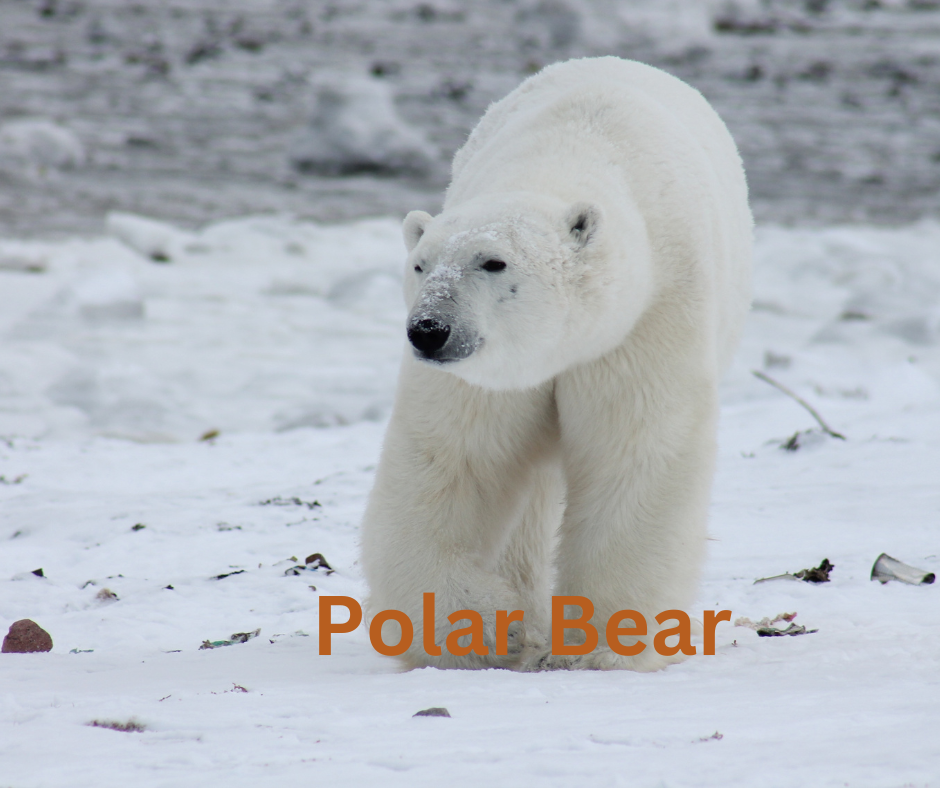
Polar bears are occasionally seen in the northern parts of Newfoundland and Labrador, particularly in the Labrador region. They are not commonly found in Newfoundland itself.
How long does it take to drive from one end of Newfoundland to the other?
Driving from the western end of Newfoundland (Port aux Basques) to the eastern end (St. John’s) takes approximately 9–10 hours without significant stops.
Is Fogo Island worth visiting?
Fogo Island is worth visiting for its unique culture, stunning landscapes, and renowned Fogo Island Inn. It offers a distinctive experience of Newfoundland’s heritage and natural beauty.
How often can you see northern lights in Newfoundland?
The Northern Lights can be seen in Newfoundland several times a year, particularly during periods of high solar activity. The best times are during winter when nights are longer and darker.
What is the best time to see the Northern Lights?
The best time to see the Northern Lights is during the winter, from late September to early April, particularly around midnight or early morning.
How long is the ferry ride to Fogo?
The ferry ride to Fogo Island from Farewell, Newfoundland, takes approximately 45 minutes to an hour.
How much is the ferry to Fogo Island?
As of the latest information, the ferry to Fogo Island costs around $15–20 CAD per vehicle and additional fees for passengers, but prices can vary, so it’s best to check current rates.
What is so special about Fogo Island?
Fogo Island is unique for its rugged natural beauty, traditional outport culture, and the acclaimed Fogo Island Inn. It’s known for its artistic community, distinctive architecture, and stunning coastal Scenery.
Are there narwhals in Newfoundland?
Narwhals are typically found in Arctic waters and are uncommon in Newfoundland.
Are there dolphins in Newfoundland?
Yes, dolphins can be seen in the waters around Newfoundland, including species like the Atlantic white-sided dolphin and the common dolphin.
Are there killer whales in Newfoundland?
Killer whales (orcas) are occasionally sighted around Newfoundland, especially during summer.
What is Cape Spear known for?
Cape Spear is known for being the easternmost point in North America. It features a historic lighthouse and offers stunning 180-degree views of the Atlantic Ocean, making it a popular tourist spot.
Where can I see whales in Newfoundland?
Some of the best places to see whales in Newfoundland include:
- St. John’s and Cape Spear
- Trinity and Bonavista
- Twillingate
- Witless Bay Ecological Reserve
How do you see puffins in St John’s?
To see puffins near St. John’s, visit the Witless Bay Ecological Reserve island, which is home to large colonies of puffins. Boat tours from Bay Bulls can take you close to the puffin nesting sites.
How long do you need to see Newfoundland?
Plan to spend at least 7–19 days to see Newfoundland highlights. This allows enough time to explore St. John’s, the Avalon Peninsula, Gros Morne National Park, and other key attractions.
When should I go to Newfoundland?
The best time to visit Newfoundland is from late June to early September when the weather is mild. You can enjoy outdoor activities, events, and festivals. This period is also ideal for whale-watching and iceberg-viewing.
These are the best travel planning resources you should use.
Looking to book your trip to Newfoundland and Labrador? Use these resources that are tried and tested by other travellers like you who vacation in Newfoundland and Labrador. Bookmark these links. Save them for future reference.
Booking Flights, Hotels or B&B: Start planning your next vacation trip by finding the best flight, hotel or b&b deals. Book Here
Finding things to do in Newfoundland and Labrador on TripAdvisor and Viator is not hard. Enjoy boat tours, whale watching, icebergs watching, kayaking and other activities.
You can also find low prices on hotels, B&B and cabins with these two providers. If you are located in Canada, the USA, the UK or Europe, use Booking.com, and if you are in Canada, the USA or anywhere else, use TripAdvisor.
Car Rental: Here is what we recommend:
When you book with Rentalcars.com, you can compare prices and find the best vehicle for your trip. Economybookings.com Display all their vehicle on the website with a detailed description. They display high-quality photos and a user rating as well. Qeeq.com serves road trip travellers like you from different countries by working with car rental companies worldwide.
Get compensated if your flight is delayed or cancel
AirHelp and Compensateair will help you with flight delays, cancellations, or denied boarding. All you need to do is to submit your flight details, and they will handle the claim process on your behalf. They will handle all the paperwork, airline negotiations, and legal proceedings.
Do you need more help planning your trip?
Check out our Resources Page, where we highlight all the resources and companies you can use to assist with your planning.
